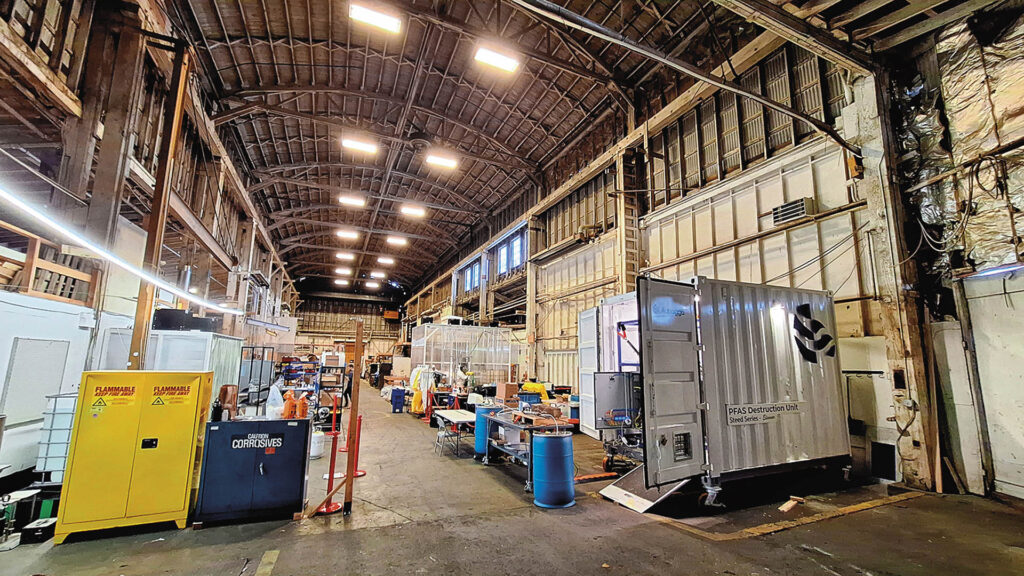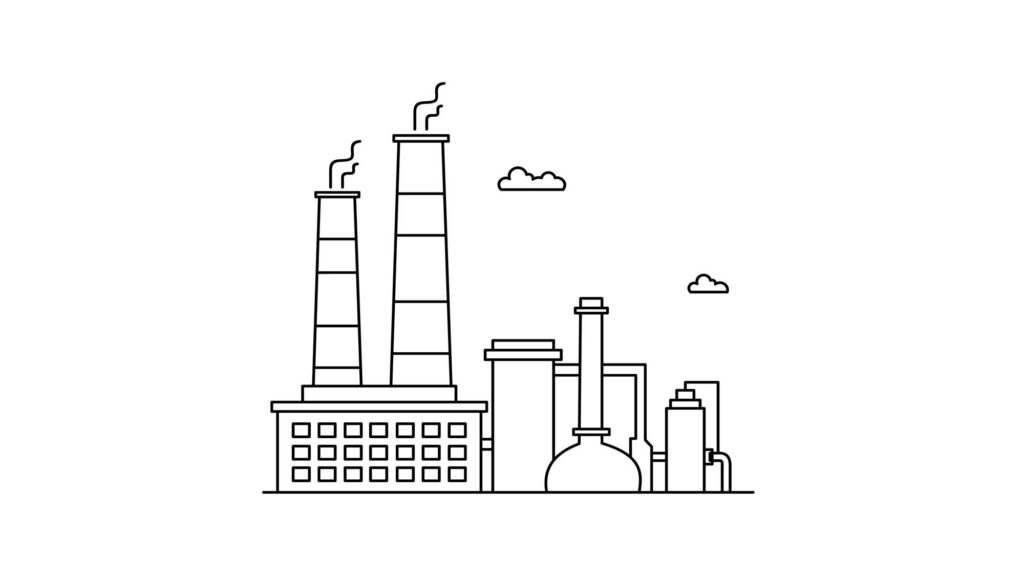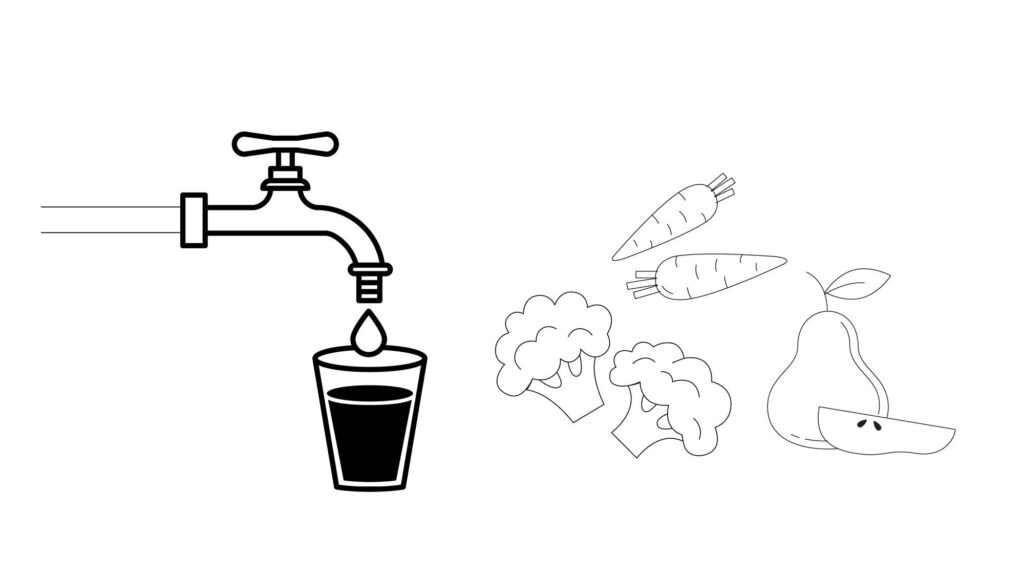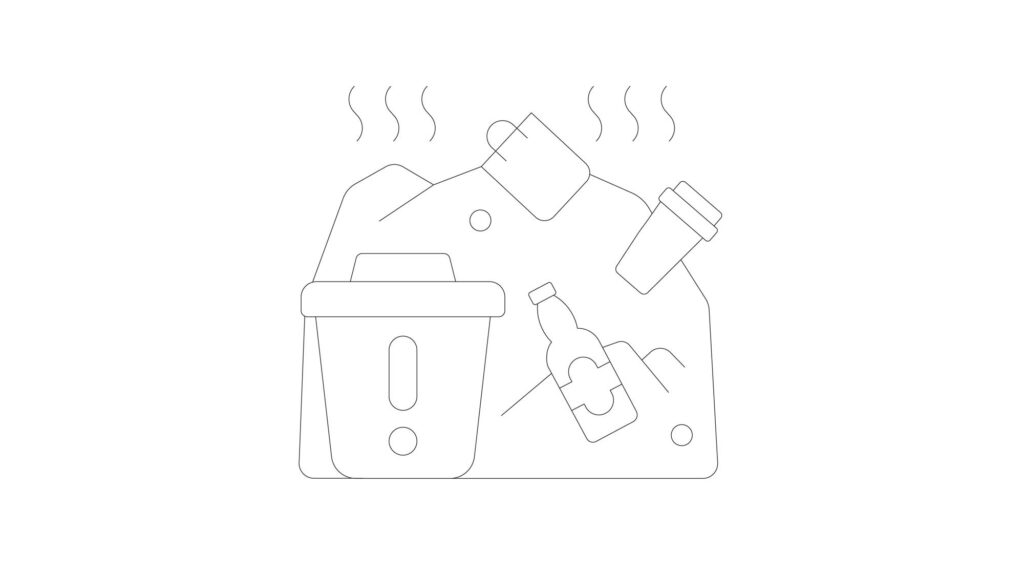Agent of change
How one alum in the Pacific Northwest is taking on forever chemicals—and joining the global fight to address the toxic crisis facing the environment and human health.
BY David Silverberg
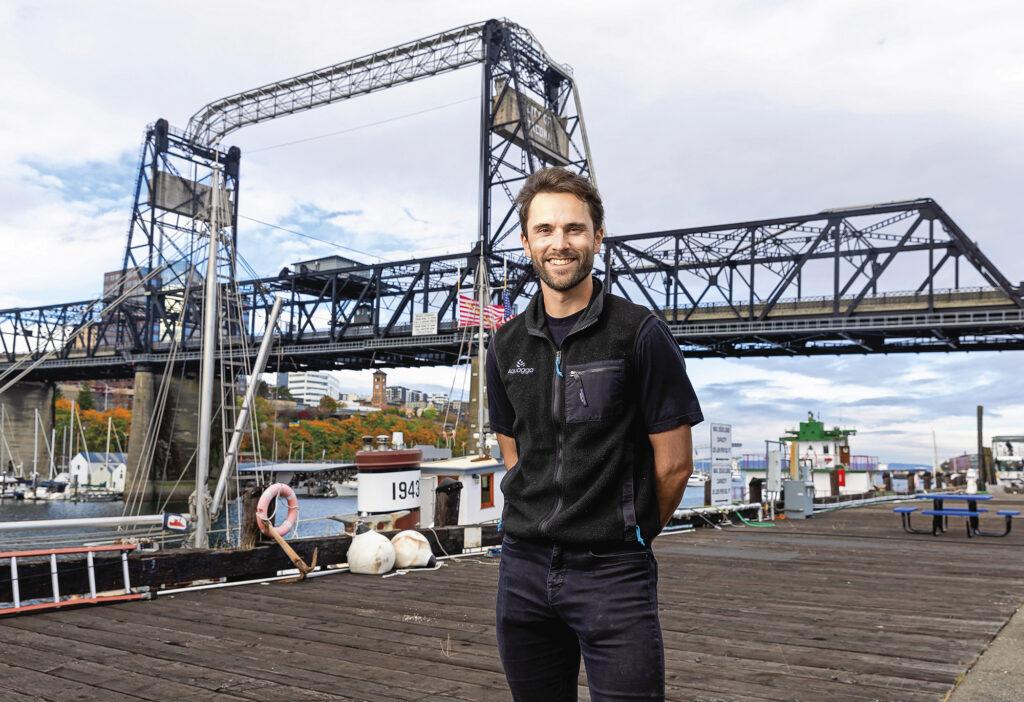
photography by Sy Bean
For Brian Pinkard ’15, his light-bulb moment struck him when he was living in a tent for six months in 2016 as part of his AmeriCorps service in rural Colorado. He was hiking up mountains as high as 13,000 feet, living with few amenities and immersing himself in nature like he was applying to be a contestant on Survivor.
“Hiking that much and flipping rocks and digging in the dirt will give you some time to think about what you want to do for the rest of your life,” says Pinkard in an interview over Zoom. “It was then that I decided I wanted to do something to help the environment.”
Fresh off graduating from Lafayette with a mechanical engineering degree, where he focused primarily on biomechanics technology, Pinkard felt closer to the natural world the longer he spent outdoors in Colorado. He enrolled at University of Washington, earning a master’s and Ph.D. degrees in mechanical engineering in 2018 and 2020, respectively, and working there as a research assistant and research scientist to help develop strategies for chemical warfare destruction. “As interesting as biomechanics was to me,” he says, “it didn’t speak to me the way environmental issues do.”
Today, Pinkard is based in Tacoma, Wash., and living up to that passion as co-founder and CTO of a startup called Aquagga. Since 2019, its mission has been to eradicate dangerous “per- and polyfluoroalkyl substances,” otherwise known as PFAS, swirling around in wastewater. This family of 15,000-plus chemical compounds have been used in hundreds of industrial and consumer applications for decades. PFAS can be found in firefighting foams, waterproof hiking boots, raincoats, nonstick frying pans, dental floss, lipstick, smartphones, and medical devices. Household brands such as Teflon and Scotchgard, for example, have been identified as having PFAS-laden products.
PFAS are dubbed “forever chemicals” due to their indestructible design, which makes them beneficial in some products but also harmful to human health. Since the chemicals do not fully degrade, they can accumulate in the environment and the human body. “What makes them so bad for us is that they’re bioaccumulative,” Pinkard explains. “So once they are in your body, they really like to stick to proteins and are inside us for a long time.”
According to the Environmental Protection Agency, exposure to PFAS can damage the liver and immune system, and has been linked to birth defects and developmental delays, as well as increased risk for some prostate, kidney, and testicular cancers. Other research revealed links between PFAS exposure and a disruption in the onset of puberty. The problem is too big to ignore: In May, the EPA confirmed 89.3 million people in communities across the U.S. have drinking water that tests positive for toxic forever chemicals.
As a result of the sheer scale of these challenges, many companies and technologies are needed in the fight against PFAS. And, in just five years, Pinkard has positioned his company to be a leader in this growing global effort.
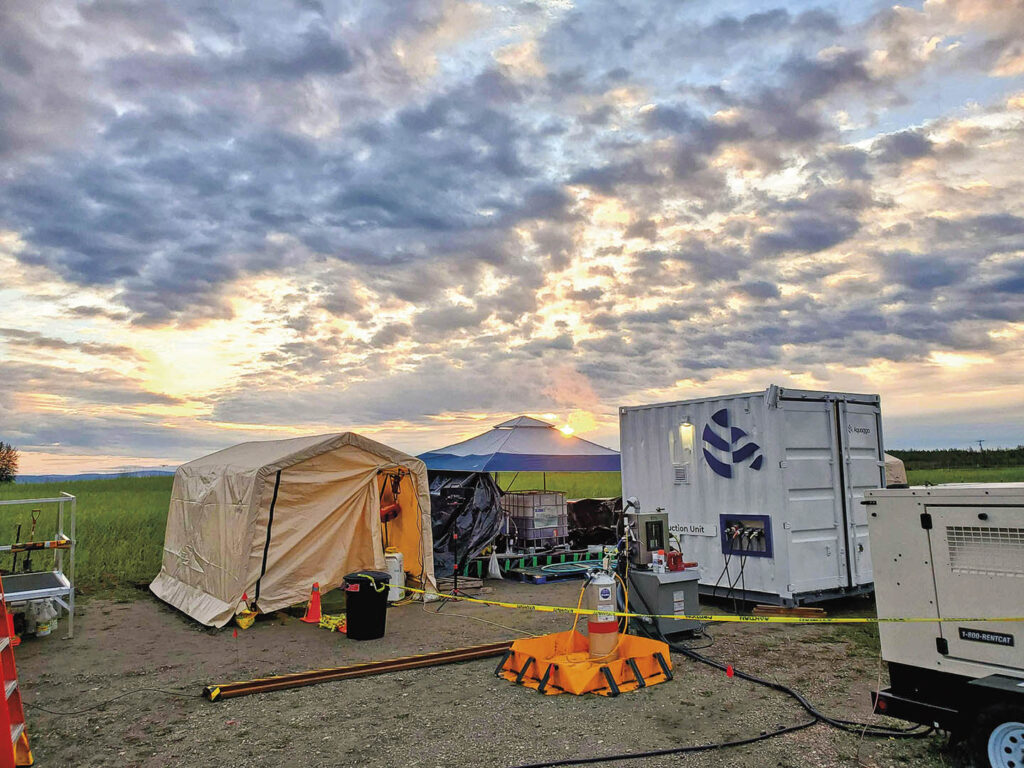
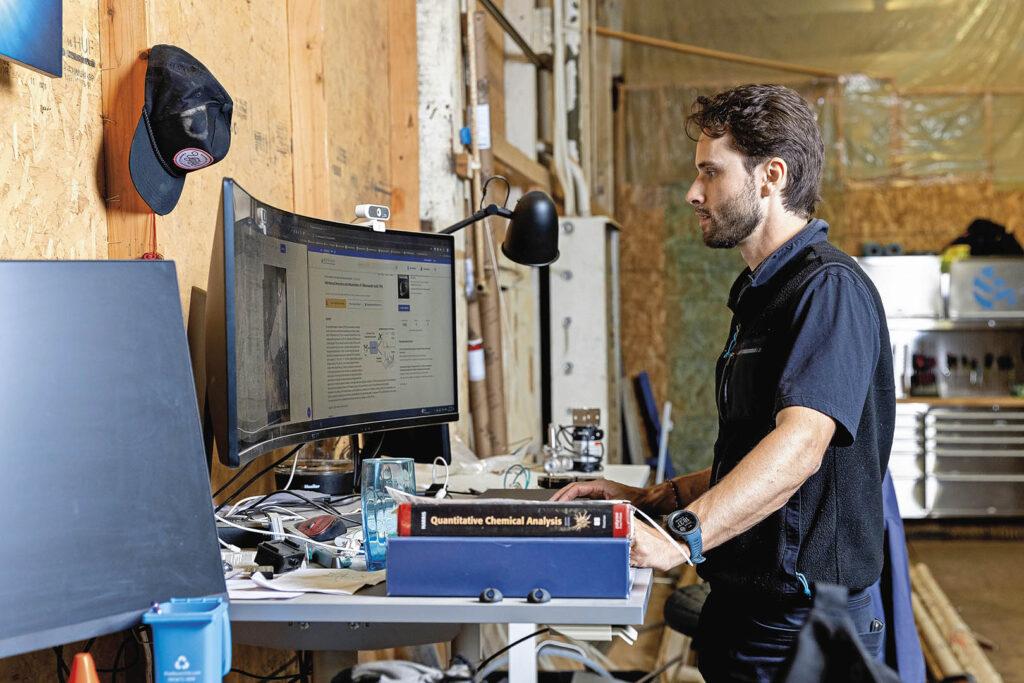
is both profitable and has a mission to help society.
The dangers of forever chemicals
Early in the conversation with Pinkard, he shares his love of a 2019 film directly related to his line of work: Dark Waters, starring Mark Ruffalo. The film is a fictional take on the real-life story of corporate lawyer Rob Bilott, who defended chemical companies before transitioning to be an unlikely crusader for the environment. “They did a fantastic job in showing what these chemicals are, and who was responsible,” Pinkard says.
Dark Waters tells the tragedy of corporate malfeasance and ignorance. Bilott discovered how DuPont had been dumping PFAS into unlined landfills in Parkersburg, W.Va., leading to sudden health conditions facing both farm animals and farmers in West Virginia. The film then chronicles Bilott’s decades-long battle with the chemical behemoths, which resulted in a slew of lawsuits. (In 2023, DuPont and two related companies said they would pay close to $1.2 billion to settle liability claims brought by public water systems.)
“It will take a long time for corporations to stop using PFAS,” Pinkard says, “but I feel privileged there is purpose behind my work.”
But long before PFAS were front-and-center in legal skirmishes, or Hollywood movies, manufacturing companies had a tough time finding the right chemical formation to make materials resistant to elements like heat and water. What was needed in order to create a nonstick coating, for example, was a strong carbon-fluoride bond that wouldn’t break apart.
DuPont hired several scientists to work on the challenge in the 1930s, and after World War II, these indestructible chemicals began to appear in everyday products. Manufacturing giant 3M invented PFOA (perfluorooctanoic acid) to prevent nonstick coatings from clumping during production. Soon, 3M began selling the material to other chemical companies.
The EPA has been slow to react to the widespread use of PFAS, since scant studies were done prior to the 2000s. Only recently, in April, did the agency announce a federal mandate: The Biden-Harris administration introduced the first-ever national drinking water standard and allocated $5 billion from its 2023 Bipartisan Infrastructure Law to confront PFAS contamination. “Drinking water contaminated with PFAS has plagued communities across this country for too long,” EPA administrator Michael S. Regan said in a statement by the agency.
Although quantifying forever chemicals found in water can be complicated, the recent, and enforceable, mandate allows for a maximum of one drop of PFAS per five Olympic-size swimming pools, or 3.3 million gallons. Public water systems must adhere to these contamination levels by 2029, but Pinkard notes the agency only set these limits on six toxic chemicals—and there are still thousands out there.
“His desire to improve our world is coupled with an insatiable, fundamental curiosity,” Prof. Alex Brown says. “This combination makes him a force to be reckoned with.”
With a sense of urgency, Pinkard has found another way to combat the crisis by using technology to target and treat materials with the highest concentrations. Aquagga has several deals in the works with manufacturing facilities to help them get rid of wastewater infected with PFAS, working in Alaska and California so far. What’s more, the startup found favor with the Department of Defense (DOD), which enlisted the company to destroy the PFAS found in standard film-forming firefighting foam, soon to be replaced everywhere with much safer foam.
This year, Forbes praised the promise and proof in Pinkard’s sustainability efforts, acknowledging him in its “30 Under 30” throughout North America list. But there’s more—a lot more—work left to do. “I know it’s going to take a long time for corporations to stop using PFAS, and many industries likely won’t go that far,” Pinkard says, “but I feel privileged that there is purpose behind my work. It’s rare to be in a sector where executing the business model leads to a positive environmental impact.”
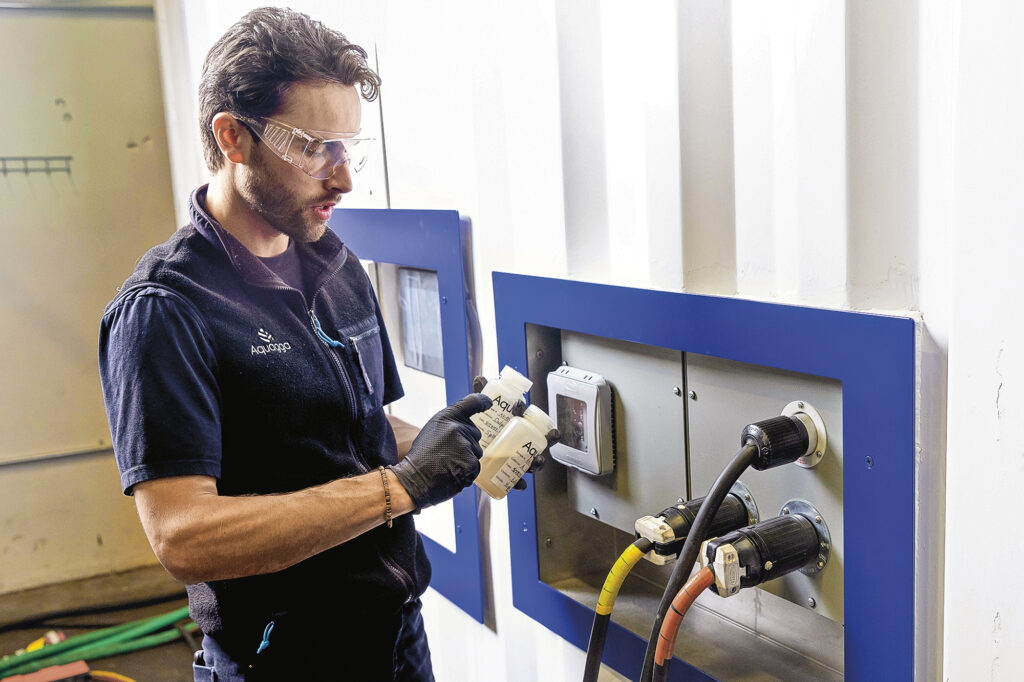
Determined to improve lives
Pinkard grew up in Puyallup, Wash., with a father who worked as a structural engineer and a mother enjoying her career as an architect. Sports and music were Pinkard’s primary interests in high school—tennis took up most of his extracurricular time—and he graded well in math and science classes.
He learned about Lafayette through his older brother, Michael ’14, who was earning a mathematics degree at the school. “Engineering was a fit for the theoretical and academic parts of my brain,” he says, explaining that he gravitated to mechanical engineering, which felt tangible and hands-on. Pinkard also co-captained the Leopards on the tennis court during his time on College Hill.
His focus on biomechanics came from a desire to solve difficult problems while impacting someone’s life. During Pinkard’s senior capstone project, he and a team of peers built a robotic tutor to teach students with learning delays how to work on handwriting; as the person’s fine motor skills improved, the robot provided less and less guidance. (The students earned a grant from the National Science Foundation to later present this project at a biomechanics, biotransport, and bioengineering conference in Utah.) “If you develop something that can help people,” says Pinkard, “that is special to me.”
Alex Brown, associate professor of mechanical engineering, was Pinkard’s senior capstone design professor. He notes that although Pinkard, at the time, had very little experience with biomechanical analysis, he ultimately created a versatile and accurate simulation of handwriting kinematics that proved crucial to his team’s success. “Brian’s path has been forged through his dedication to improving the lives of others,” Brown says. “His desire to improve our world is coupled with an insatiable, fundamental curiosity. This combination makes him a force to be reckoned with when presented with difficult challenges.”
Pinkard came into Lafayette with several AP credits, allowing him to graduate a year earlier than others. Leaving early wasn’t an option he had in mind until he had a conversation with his academic adviser and associate professor of mechanical engineering, Josh Smith. Having those credits was double-edged, in a way. “Those credits gave him the opportunity but also came with the challenge of being so far ahead of other students,” Smith says.
When it came time for the department’s annual Faculty Awards in 2015, Pinkard won the Engineering Design Award. Smith notes, “That’s a testament to not just academic aptitude but to being a leader of his team for that capstone project.”
After Lafayette, Pinkard worked for AmeriCorps as a trail crew member in Colorado and then Wyoming, where his refreshed focus on environmental issues emboldened him to enroll at University of Washington. It was there he learned more about getting rid of harmful chemicals: Pinkard was part of a team tasked with figuring out how to safely dispose of barrels of nerve agents like mustard gas and VX, short for “venomous agent X,” that were strewn across the Syrian desert during the conflict in the region.
Although Pinkard didn’t travel to Syria, he tested hypotheses in a lab and found a way to use a portable reactor that could be taken to those areas and neutralize the nasty compounds on-site. His Ph.D. on hydrothermal processing riffed off solving that issue—and gave him the seed for what he would eventually launch as an entrepreneur.
Aquagga takes off
In early 2019, through a friend, he found out about NSF’s Innovation Corps, which acts as an immersive, entrepreneurial training program to embolden company founders to recognize the right application for their product or service. Laden with $50,000 from the I-Corps, an ally in entrepreneur Nigel Sharp, and six months to interview major players in the utilities sector, Pinkard incorporated a business focused on sewage sludge removal.
From talking to municipalities, he learned that water utilities might be reluctant to take risks on new technologies. But Pinkard also picked up on choruses about PFAS and their indestructibility. “We were hearing from utility owners about PFAS being the biggest problem, and if somebody could figure out how to safely eradicate them, they would be millionaires. And we were hearing that over and over,” he recalls.
Around that same time, Pinkard read a study by Timothy Strathmann, a professor of civil and environmental engineering at the Colorado School of Mines. Strathmann revealed how a process called hydrothermal alkaline treatment (HALT) could be used to destroy PFAS, similar to how it’s been leveraged for decades to get rid of chemical weapons. This powerful technique obliterates harmful chemicals via a pressure cooker-like technology that operates at 662 degrees Fahrenheit. Unlike other technologies, HALT can handle high levels of salts in water and has a safer than approach to ridding the PFAS.
“I have tremendous optimism for Aquagga’s future,” Pinkard says. “We’ve put ourselves in a position where we have world-leading PFAS destruction capabilities and commercial offerings.”
Pinkard and Sharp perked their ears once they read this study, and contacted the Office of Technology Transfer at the Colorado School of Mines to learn about licensing the approach. They agreed, and now Aquagga has an exclusive license to commercialize the technology. “I love how Brian has a very strong technical background, besides being an entrepreneur,” Strathmann says. “He doesn’t believe everything is a nail that a hammer can solve. He’s very measured.”
Now, with over $10 million in funding, Aquagga is primarily working with manufacturing facilities in desperate need of a solution to get rid of their forever chemicals. (Think: airports that have contamination due to fire training, or industrial wastewater of large-scale companies that have historically been involved in producing PFAS.) After all, they don’t want to just dump it or incinerate it, and endure a host of lawsuits, Pinkard says.

With treatment systems they bring on-site or lease to clients, Aquagga takes in the toxic wastewater and treats it under conditions similar to a beefed-up pressure cooker (high temperatures and high pressures), eliminating more than 99% of the PFAS from water. Key to the process is cranking up the pH levels; Aquagga’s technology uses sodium hydroxide, the chemical in lye, like a catalyst. With that mixture, HALT can trigger the PFAS molecules to break down in a matter of minutes.
“What we basically make is a brine, very salty water, and we break the carbon-fluoride bond of the PFAS molecules to create dissolved fluorides, sulfates, and carbonates—common salts that you see in drinking water, baking soda, and laundry detergent. We would discharge those or send them to another wastewater facility,” Pinkard explains.
Pinkard recalls one client who had wastewater with a starting PFAS concentration of about 200 parts per million. “By the time we were done treating it, it was below four parts per trillion,” he says.
The DOD has been eyeing Aquagga intensely over the past five years. Pinkard says he has several projects currently funded by the DOD’s Environmental Security Technology Certification Program, one of which is in partnership with the Defense Innovation Unit. They are also engaged in a project funded by the National Defense Center for Energy and the Environment; and in the summer, Aquagga completed two projects at Beale Air Force Base in California.
“I have tremendous optimism for Aquagga’s future,” Pinkard says. “We’ve managed to put ourselves in the position where we have world-leading PFAS destruction capabilities and commercial offerings, and have continued to demonstrate a strong track record of success.”
Pinkard’s efforts in the global cleanup, in combination with those of other like-minded and dedicated scientists and engineers, offer the general public an important glimmer of hope: creating generational impact by offering a road map toward safer water.
THE PFAS CYCLE
Understanding where PFAS can be found—and how they got there.

